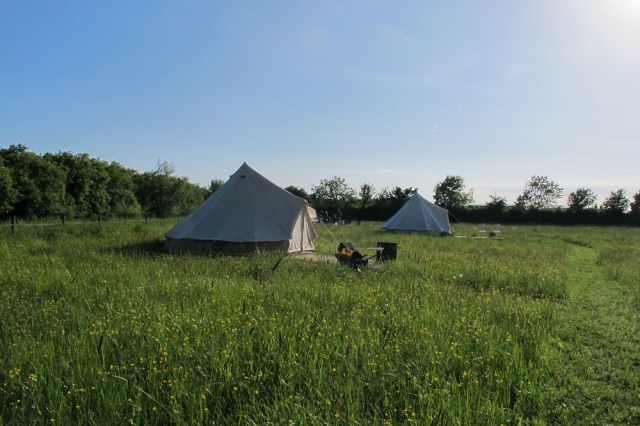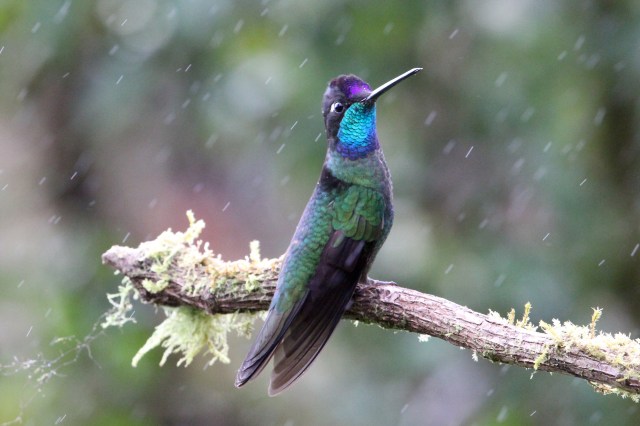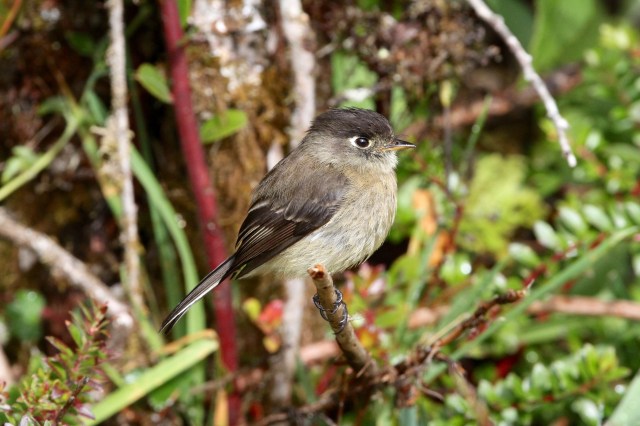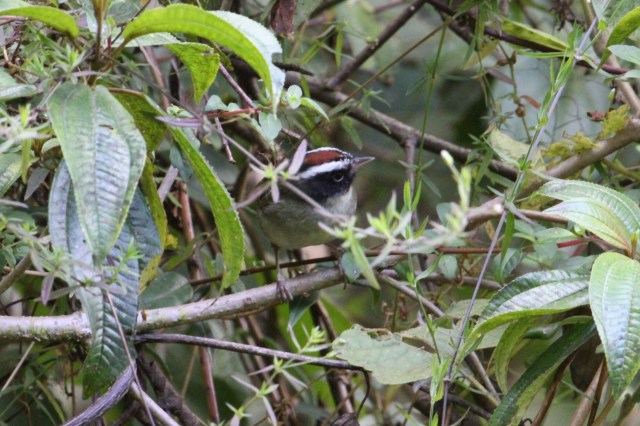
The final species we saw at Alex’s place, before departing for Orosi, was this female White-collared Manakin
The route between Sarapiqui and Orosi, our next stop, takes you through some interesting countryside, past a well-known humming bird reserve on Route 32 – little more than an over-grown garden but packed full of these exquisite but frustrating little birds.
At the mountain garden reserve on Route 32, our target bird was Snowcap – quite different from other ‘hummers’

Other nice species included Green Thorntail

and this tiny Black-crested Coquette

The small town of Orosi is well placed for visiting the excellent national park of Tapanti, describe in the site guide as ‘a birding gem, providing access to a wide diversity of species in beautiful upper-midddle-elevation forest.’ We stayed in the conveniently located and well appointed Chalet Orosi – Silvia the manageress, who speaks excellent English, couldn’t have been more helpful. The chalet is situated in well kept grounds with good views over the surrounding countryside. We saw forty species of birds just whilst enjoying our leisurely breakfasts! We had scheduled two full days for visiting the park – on the first day it rained continuously and it was near impossible to bird outside. Luckily, we came across Kiri Lodge, the nearest accommodation to the main entrance to the park, but which was full at the time of organising our trip. They have an excellent open-air restaurant, with extensive views over the approach to the National Park, and so we spent most of our first day birding from their veranda. By the following day the weather had improved and we spent the whole time in the park, finding and observing a wide range of species.
Chalet Orosi – an excellent base from which to explore the Tapanti National Park

One of the first species seen near the park on our first rain-drenched day was this one, Chestnut-headed Oropendola

Another bird seen on the approach track was this Orange-billed Nightingale-Thrush, one of several of this family seen on our trip

Black Guan, observed from the Kiri Lodge veranda, whist enjoying a leisurely lunch – it’s still raining!

You’re never far away from this watchful fellow – Roadside Hawk, one of the commonest Costa Rican raptors

Once inside the park, more colourful tanagers were added to the list, including, Spangle-cheeked

also more ‘hummers’ – this one is Green Hermit

and this rather under-stated Rufous Mourner – named after it’s melancholy song

Final photo from the Tapanti National Park, Black-faced Solitaire – ‘it’s ethereal song, a characteristic feature of montane wet forest – extremely difficult to locate whilst singing.’

On our way to the next destination, the world renowned Paraiso del Quetzal lodge, we stopped off at Lankester gardens, on the outskirts of Cartago – ‘a small oasis set among fields, cattle pastures and residential neighbourhoods’. Much more of the latter since the guide book was written, but still a good place to catch-up with some interesting species.
This Green Heron gave exceptionally close views on one of the ornamental garden ponds

as did this White-eared Ground-Sparrow, watched whilst drinking coffee in the gardens cafe














































































